Introduction
Minimalism is more than just a design trend or a way to declutter physical spaces. At its heart, it’s a reflection of how we perceive value, attachment, and identity. Minimalism seeks to strip away the excess, to embrace simplicity, clarity, and a life focused on what truly matters. But what really defines “what matters”? For some, it’s tangible objects; for others, it’s the intangible experiences that leave a lasting mark. The Myers-Briggs Type Indicator (MBTI) provides a unique lens to understand these variations in how individuals approach the act of letting go—or holding on—when it comes to material possessions.
People often think of minimalism in terms of the number of possessions, but the deeper psychology lies in the values, attachments, and emotional connections we form with objects. Some individuals feel comforted by their belongings, others by the space created when they let go. It’s not just about owning fewer things—it’s about the significance and role those things play in one’s life. Understanding how the 16 MBTI types approach minimalism can reveal a great deal about the cognitive, emotional, and psychological motivations behind their choices. This article will take an in-depth look at how each MBTI type navigates the minimalist journey, reflecting on their tendencies toward accumulation or decluttering.
The Psychology of Minimalism: A Framework
The psychological underpinnings of minimalism are complex. At its core, minimalism is a method of managing both physical and emotional space. Individuals are not only deciding what to keep and what to discard—they are also navigating the deeper psychological implications of those decisions. Emotional attachment, cognitive preferences, and even childhood conditioning play a role in how each person approaches minimalism.
For instance, individuals with Sensing (S) preferences may feel a greater attachment to physical objects because they provide concrete evidence of the past. Their memories are often anchored to specific items—whether it’s a childhood toy, a gift from a loved one, or a family heirloom. Intuitive (N) types, on the other hand, may place less importance on the material world and more on the abstract—ideas, possibilities, and connections.
The divide between Thinking (T) and Feeling (F) preferences also comes into play. Thinking types are more likely to view possessions pragmatically, considering their utility and functionality. In contrast, Feeling types may have a more emotional connection to their belongings and find it harder to part with items that hold sentimental value.
Finally, the difference between Judging (J) and Perceiving (P) types adds another layer of complexity. Judging types prefer structure, organization, and predictability, which might influence their desire for tidy spaces with minimal clutter. Perceiving types are more flexible and spontaneous, potentially accumulating items based on impulse or creative inspiration, making them less concerned with rigid organization.
Minimalist vs. Collector: How Each MBTI Type Relates to Possessions
ISTJ – The Systematic Keeper
ISTJs have a strong sense of duty and responsibility, and they approach minimalism with a sense of order. They are likely to keep items that have a practical use or serve a historical purpose, such as family heirlooms or tools with longstanding utility. For the ISTJ, minimalism is about maintaining functionality without unnecessary excess, but their attachment to objects often comes from their deep respect for tradition and the past. They are methodical in their approach and often prefer rules to guide their decisions.
However, their attachment to certain objects can be a struggle. For example, an ISTJ might hold onto an outdated appliance because it still works, even though a more modern version might be more efficient. The idea of discarding something “perfectly functional” feels wasteful, which can conflict with the minimalist notion of only keeping items that serve an immediate purpose.
To support their journey toward minimalism, ISTJs benefit from adopting strategies that help them approach the decluttering process in a systematic way, such as the “one-year rule.” This allows them to evaluate the necessity of their possessions while maintaining control over the process.
ISFJ – The Sentimental Archivist
ISFJs are likely to have the most emotionally charged relationship with possessions. For them, objects are memories in physical form—each item tells a story of family, childhood, or important life events. Decluttering can be a deeply emotional experience for ISFJs, as they often feel like they are discarding parts of their history.
Minimalism for ISFJs is not just about letting go of items but about curating their environment to reflect the personal stories that matter most. They may be drawn to keeping objects that represent milestones in their lives or the lives of their loved ones. However, letting go can feel like erasing a part of who they are, making the process more difficult. To navigate this, they might take a more reflective approach to decluttering. One useful technique is the “memory journal,” where they photograph sentimental items and write down their memories before letting them go. This process allows them to honor the value those items held without physically keeping them.
INFJ – The Philosophical Minimalist
For INFJs, minimalism is not just about a clean space—it’s about alignment with personal values and creating an environment that promotes mental clarity and self-reflection. They are drawn to minimalism for its symbolic and existential significance. To an INFJ, every item in their home should serve a purpose that aligns with their higher ideals, whether that’s promoting a peaceful atmosphere, supporting creativity, or encouraging personal growth.
However, INFJs can struggle with decision-making in the decluttering process. Their idealistic nature may cause them to overanalyze whether an item truly serves their higher goals, leading to delays or decluttering paralysis. They may also feel a strong emotional attachment to items tied to past experiences, making it difficult to part with possessions that once served an important role in their life.
Their ideal version of minimalism is not about sacrificing items that bring them joy but creating a space that reflects their authentic self. This can be accomplished through careful, intentional decluttering that is guided by a clear vision of their ideal lifestyle.
INTJ – The Efficiency-Driven Minimalist
INTJs approach minimalism with the mindset of optimization. They are logical, strategic thinkers who value efficiency in all aspects of life, including the management of their physical environment. For them, every possession should serve a specific purpose, whether it’s enhancing productivity or supporting long-term goals. Excess items are viewed as impediments to clarity and progress.
However, INTJs may struggle with perfectionism, which can lead to difficulties in fully embracing minimalism. They may feel the need to wait for the “perfect” minimalist setup before taking the plunge. This can result in indecision or overanalysis, where they keep things they deem inefficient in anticipation of a more ideal solution.
To succeed in their minimalist journey, INTJs benefit from adopting a “systems-based” approach, where they create rules and guidelines to follow. For example, they might limit the number of books they own by setting criteria based on necessity or intellectual value.
ISTP – The Pragmatic Purger
ISTPs have a natural tendency toward practicality, and their approach to minimalism reflects their need for function over form. For them, the value of an object is determined by its utility. They keep what is necessary for their daily life or for specific hobbies and discard the rest. There is little sentimental attachment to possessions, as ISTPs prioritize the present moment and practical experiences over material goods.
However, their minimalism may not be entirely devoid of accumulation. ISTPs are often hobbyists who may collect tools, equipment, or materials for various projects. While their approach to minimalism might seem straightforward, they can struggle with hoarding items related to their interests, particularly if they believe they might need them later.
Their minimalist philosophy is driven by efficiency—anything that doesn’t serve a direct, practical purpose is unnecessary. This pragmatic purging makes it easy for them to clear out space, but it also means they must periodically assess their possessions to avoid accumulating unnecessary items related to hobbies or interests.
ISFP – The Aesthetic Collector
ISFPs are artists at heart, drawn to beauty, aesthetics, and personal expression. For them, minimalism is not just about eliminating clutter but curating their environment in a way that reflects their artistic sensibilities. They are drawn to items that inspire them—whether it’s art, clothing, or furniture—that evoke emotional or aesthetic joy.
While they appreciate the clean and simple aesthetic of minimalism, they also have a deep connection to the objects they choose to surround themselves with. The minimalist lifestyle for ISFPs is less about austerity and more about curating a personal space filled with meaningful, visually appealing items. Their struggle lies in finding a balance between holding on to items that inspire them and embracing the minimalist ideal of reducing possessions to only what is necessary.
For ISFPs, a minimalist approach might involve focusing on quality over quantity. They may choose to keep only items that align with their aesthetic vision, ensuring that their living space serves as a reflection of their identity.
Q&A: Your Minimalism Questions Answered
As minimalism continues to gain popularity, many people find themselves asking questions about how to integrate it into their own lives. Here are a few frequently asked questions and answers based on the MBTI framework.
Q: Can a minimalist lifestyle work for someone who loves collecting?
A: Yes! Minimalism is not about giving up everything you love—it’s about choosing what truly adds value to your life. A person who loves collecting can still adopt minimalist principles by curating their collection, ensuring that each item serves a purpose or holds significant personal value. It’s all about quality over quantity and finding balance.
Q: How do I declutter without feeling guilty about letting go of sentimental items?
A: Guilt is a common feeling when letting go of items that hold sentimental value. The key is to reframe decluttering as an act of appreciation rather than loss. Honor the memories those items represent by taking a photo or writing down your feelings about them before letting them go. This way, you can hold on to the sentiment without the physical object.
Q: How can I overcome decision fatigue when decluttering?
A: Decision fatigue is real, especially when you’re faced with a large volume of items. Start small—declutter one category or one room at a time. Setting specific criteria for what stays and what goes can help make the process more manageable. Remember, minimalism is a journey, not a one-time event. Take breaks, and don’t rush the process.
Conclusion: Embracing Minimalism in Your Own Way
Ultimately, minimalism is about more than just physical space—it’s about creating a lifestyle that reflects your values, priorities, and psychological needs. Whether you embrace a highly structured, functional minimalist approach or prefer a more aesthetic, curated lifestyle, understanding your MBTI type can help you navigate the process in a way that feels authentic to you.
By exploring how each MBTI type engages with the minimalist philosophy, we can see that minimalism is not a one-size-fits-all lifestyle. It’s a personal, evolving journey shaped by our unique cognitive processes and emotional attachments. The key is to find a balance that works for you, one that supports your well-being and allows you to thrive in a clutter-free environment.

